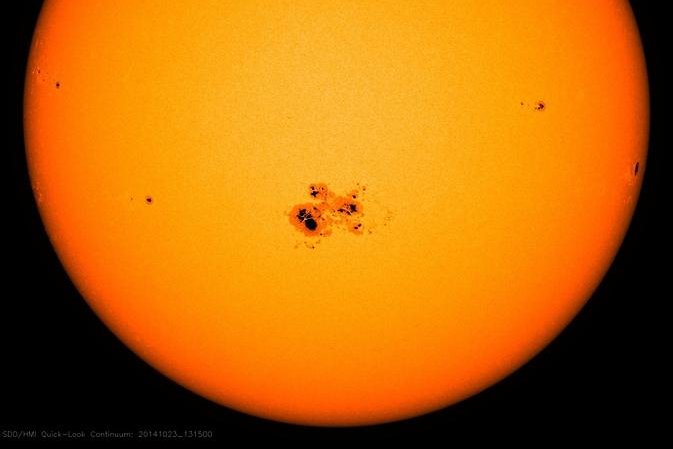WASHINGTON, Oct. 27 (UPI) -- It's no longer just the largest sunspot in more than 20 years; it's the sunspot that just won't quit. The solar region, known as Active Region 12192 (or AR 2192), has been ripping off solar flares for more than a week now, and has shown no signs of slowing down.
The region -- which began forming as far back as 2008, and is still rich in electromagnetic activity -- launched an X1 flare on Saturday (an X-class flare is the largest variety) and followed it up with an X2 flare each of the of the last two days. Friday featured an X-class solar flare too.















